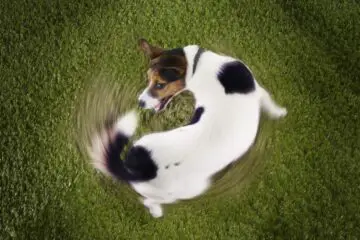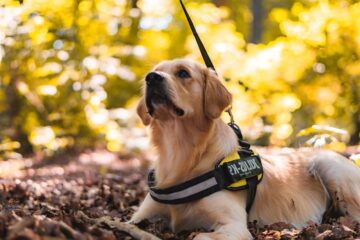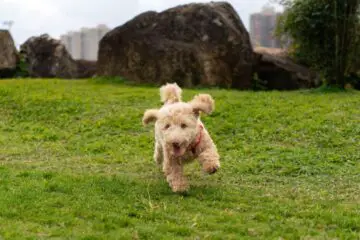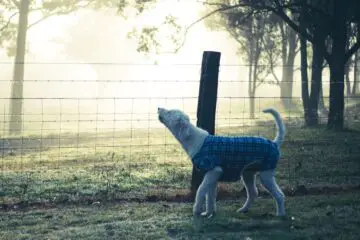Establishing a Routine of Dog Training
Dogs respond best to a set routine, so it’s important to establish a regular schedule for training sessions. Puppies, in particular, need short but frequent training sessions to learn effectively. A good rule of thumb is to train your dog for five minutes per day for every month of their age – so a three-month-old puppy should have training sessions that last 15 minutes.
As your dog gets older, you can gradually increase the length of their training sessions. However, it’s still important to keep things short and sweet – dogs have a limited attention span and will quickly become bored if they’re made to sit through long, drawn-out training sessions.
Types of Training for Dogs
There are different types of training that you can do with your dog, depending on what you want to achieve. For example, obedience training is key to teaching your dog basic commands such as sit, stay, come, and down. This type of training is important for helping your dog learn how to behave in different situations and can be useful in everyday life.
When you’re looking for advice on how to train a dog, you’ll also encounter terms like:
- potty training – teaching a dog where and when it’s appropriate to relieve themselves;
- house training – teaching a dog how to behave in the home;
- crate training – getting a dog used to spending time in a crate or kennel;
- leash training – teaching a dog how to walk on a leash without pulling;
- socialization – exposing your dog to different people, places, and experiences in a positive way;
- clicker training – a type of positive reinforcement training that uses a clicker to mark desired behavior.
Agility training is another popular option, which involves teaching your dog to navigate an obstacle course. This type of training is great for giving your dog some mental stimulation and exercise, and it can also be a lot of fun!
Finally, there’s behavior modification training, which is used to address specific behavioral issues such as excessive barking, chewing, and digging. This type of training requires patience and consistency, but it can be very effective in correcting problem behaviors.
How to Train a Dog Successfully
Now that you know a bit about the different types of dog training, let’s discuss how to train a dog successfully. The most important thing to remember is that training should be fun – for both you and your dog! Dogs learn best when they’re rewarded for good behavior, so be sure to use plenty of praise, treats, and petting during training sessions.
It’s also important to be consistent with your commands and rewards. If you only give your dog a treat sometimes when they obey a command, they’ll quickly learn that they don’t always need to listen to you. Similarly, if you use different words for the same command (e.g., sit and down), your dog will get confused and won’t know what you want them to do.
Finally, don’t forget to practice patience! Training takes time and effort, and there will inevitably be setbacks along the way. But if you stick with it, you’ll eventually have a well-trained dog that’s a joy to be around.
Basic Obedience Training for Puppies
Now that we’ve gone over the basics of the dog training process, let’s discuss how to train a dog basic commands. Puppies are notoriously mischievous, so it’s important to start obedience training as early as possible. The most important thing to remember when training a puppy is to be consistent – set rules for your puppy and stick to them.
When it comes to obedience training, there are a few basic commands that every puppy should learn:
- Sit. To teach your puppy to sit, hold a treat above their head and move it behind it until they sit. When they do, reward them.
- Stay.Have your puppy sit, then slowly back away from them. If they move towards you, say „no,” then tell them „stay” when they stop. Give them the treat at the same time.
- Come. Put your puppy on a leash, then stand across from them and say the command. Pull on the leash gently, and when your dog moves forward, reward them.
- Down. Show your dog a tasty-smelling treat, then move it down to the ground. Say the command when your dog lies down on their belly and give them the treat.
- Wait. Have someone open the door from the outside. Reward the dog if they don’t lunge at the open door, but close it if they do. Repeat if needed.
- Watch me. Teach your puppy to look at you by holding a treat near their nose, then slowly moving it towards your face while saying the command.
As your puppy masters these basic commands, you can begin to add more advanced commands to their repertoire. For example, you can teach them to stay off furniture, drop an item they’re holding, or come when called from another room. With time, patience, and consistency, your puppy will learn all the obedience commands you want them to know.
However, it’s important to take things slowly – puppies have short attention spans and will quickly become bored or overwhelmed if you try to do too much at once. Start with one or two commands and gradually add more as your puppy gets older and more experienced.
How to Train a Dog That Isn’t Food-Motivated?
One common question that dog owners have is how to train a dog that isn’t food-motivated. After all, most dogs will do just about anything for a treat! If your dog isn’t motivated by food, don’t worry – there are still plenty of other ways to get them to obey your commands.
One way is to use toys as rewards. This can be especially effective if your dog is already toy-oriented. Another option is to use praise and petting as rewards – many dogs are motivated by the attention of their owners.
You can also try using a clicker to train your dog. A clicker is a small, handheld device that makes a clicking sound when pressed. When used in training, the clicker is paired with a treat or other reward. Every time the dog does what you want them to do, you click the clicker and give them the reward.
Over time, your dog will learn to associate the clicking sound with getting a reward, and they’ll start obeying your commands in order to get the click.
No matter what method you use, the most important thing is to be consistent. Dogs are creatures of habit, so if you’re inconsistent with your training, they’ll quickly get confused and won’t know what you want them to do. Finally, don’t forget to have patience! Training a dog takes time and effort, but it’s well worth it when you see your furry friend finally obeying your commands.
Now you know how to train a dog. With these tips in mind, you’ll be able to do it successfully – no matter how food-motivated your pup is (or isn’t). Good luck!











